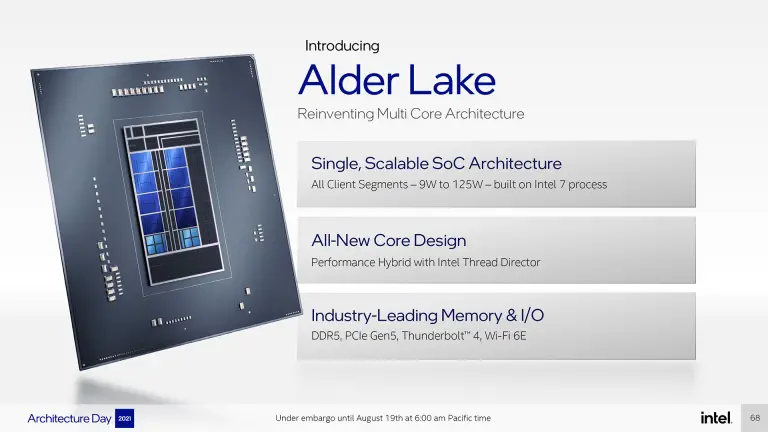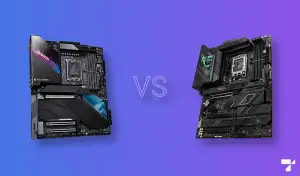Intel has announced the hybrid architecture of its 12th-generation Alder Lake processors that feature both P-Cores (Performance Cores) and E-Cores (Efficient Cores) to achieve optimal system performance. Which, according to Intel, represents its most significant advancement in a generation and would set the ground for further improvements in the following decade.
Intel P-Cores and E-Cores work seamlessly together to handle both the foreground single-threaded tasks and background multi-threaded tasks assigned to them by a hardware scheduler called the Intel Thread Director.
Intel’s goal with the implementation of this new architecture is to get a hybrid performance that will combine the best qualities of both the high throughput Performance Cores and the improved efficiency of Efficient Cores in a single CPU to produce a system that is powerful yet has lower latency all with the help of the Thread Director.
Definition of a P-Core
A performance Core (P-Core) is a type of high-performance CPU core based on the Golden Cove microarchitecture that handles heavy single-thread high throughput foreground workloads to optimize performance.
Definition of an E-Core
An Efficient CPU Core (E-Core) is a power efficiency-focused core based on the Gracemont microarchitecture that handles the lower priority multi-threaded workloads of the system for optimum efficiency and low latency.
P-Core and E-Core Overview
| Parameter | P-Core | E-Core |
|---|---|---|
| Architecture | Golden Cove architecture | Gracemont microarchitecture |
| Functionality | Handles higher priority foreground tasks that requires a lot of power. | Handles background tasks or the workload that requires less power |
| Size | Takes up larger space in the CPU architecture compared to an E-Core. | Are small cores of which four of them will fit in the space that one P-Core. |
| Use | Is mainly used for single-threaded heavy throughput workloads. | Is mainly used for handling lower priority multi-threaded workloads. |
| Example | Examples of applications that run on P-Cores include games, photoshop, video content creation applications, streaming, etc. | Examples of applications that run on E-Cores include Email sync, calendar notifications, etc. |
How P-Cores and E-Cores Work Together?
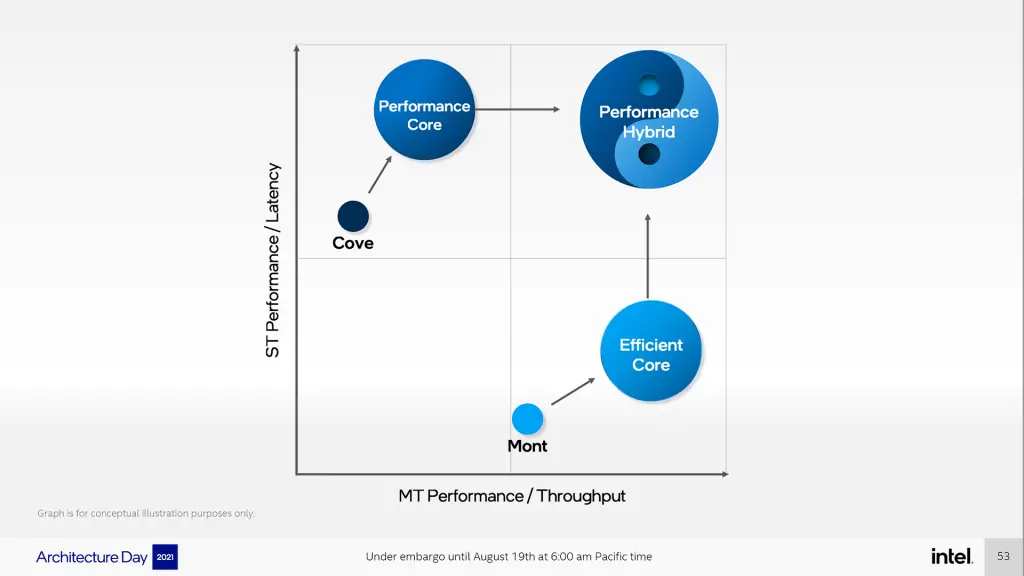
Intel’s goal with Alder Lake was to get high throughput and low latency out of the hybrid architecture featuring both P-Cores and E-Cores. And to do that, using the conventional task assignment method would not deliver the best performance latency and efficiency wise.
Therefore, Intel leveraged a hardware scheduler known as the Thread Director to work with the Operating System scheduler. This allows for efficient delegation of tasks across the two types of cores leading to increased performance and lower latency.
The Intel Thread Director simply provides the OS with visibility into the current state of each core. If a critical performance task became available while all the P-Cores are busy handling tasks, the thread director can decide the least critical task on the P-Core and move it to the E-Core. It would then assign the new performance critical task to the P-Core and keep the computer running optimally. This shows the dynamic nature of the thread director technology.
General differences between a P-Core and E-Core
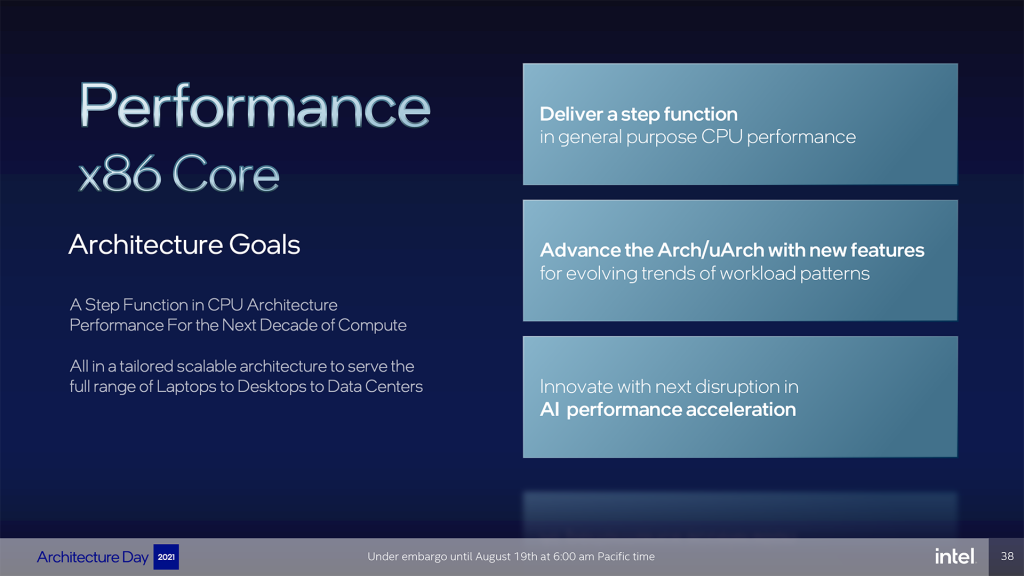

The P-Cores and E-Cores differ significantly in their performance, structure, purpose, capability, and architectural design. The general differences are:
- Function – P-Cores handle the heavy foreground tasks assigned by the OS, while E-Cores handle the background tasks requiring less power.
- Type of Workload –P-Cores are designed to handle single-threaded workloads and achieve low latency, while E-Cores are mainly designed to handle multi-threaded workloads for increased efficency.
- Use – P-Cores help ensure that the system works at its optimal performance level, while E-Cores help with power efficiency.
- Architectural Design – P-Cores are built on the Golden Cove architecture, while E-Cores are built on the Gracemont architecture.
- Single-threaded performance – In single-threaded applications, a single P-Core (Golden Cove) delivers a 50% single-threaded performance increase over E-Core (Gracemont) within the same die area and power package.
General similarities between a P-Core and E-Core
Although the hyper-threaded performance cores and the efficient cores are built on separate architectures, there are a few similarities between them. They include.
- Number of Cores – In Alder Lake CPU, there are eight performance cores and eight efficient cores working in tandem.
- Improvements on Previous design – Both the Golden Cove P-Cores and the Gracemont E-Cores were handed significant upgrades that makes them perform better than their predecessors. According to Intel, the P-Cores guarantee a 19% more Instructions per Cycle (IPC) than its predecessor “Cypress Cove” while E-Cores deliver 40% more performance than Skylake core.
- Working Principle – The P-Cores and the E-Cores receive tasks from the operating system scheduler after the Intel thread director provides accurate information to the OS.
- Capability – Although originally designed to handle single-threaded and multi-threaded tasks respectively, the P-Core and the E-Cores have been optimized in their ability to handle both tasks efficiently.
Architectural Differences
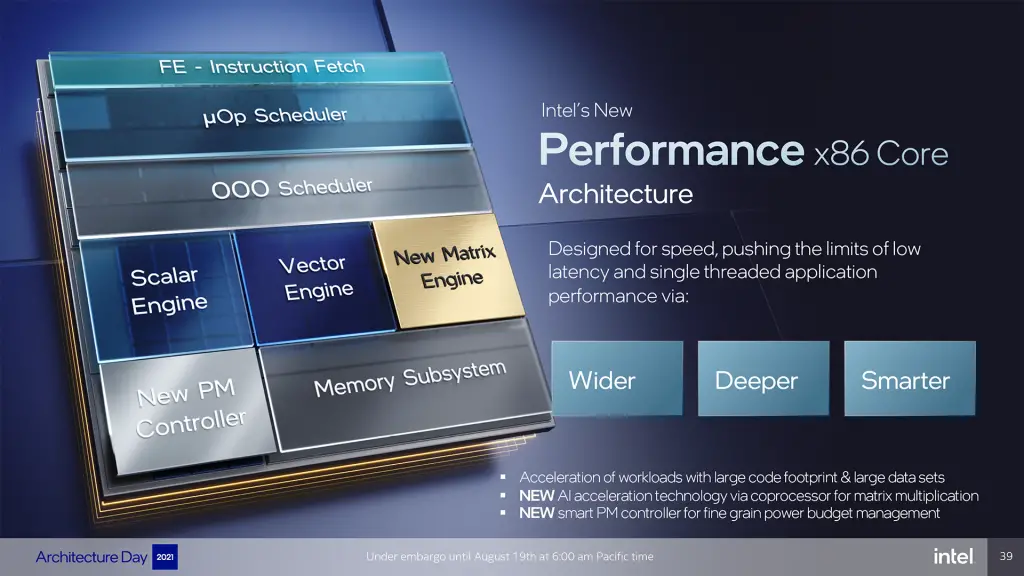

There are several differences in the way the two cores were designed. While one was designed to optimize performance, the other was designed to maximize system efficiency. The key differences in the architecture of both cores include.
- Design – The P-Cores are built based on the Golden Cove architecture to push the limits of low latency and optimize system performance while the E-Cores were designed based on the Gracemont microarchitecture to maximize efficiency.
- Physical Size of Each Core – According to Intel, the space occupied by one P-Core is enough to fit in a cluster of 4 E-Cores plus a 4Mb L2 Cache.
- Threads per Core – There are 24 threads in the Alder Lake CPU. Intel revealed that each P-Core would be assigned two threads while each E-Core would handle one thread.
- Execution Ports – Gracemont E-Cores have wider execution capabilities than Golden Cove P-Cores. E-Cores been upgraded to have 17 execution ports, a significant improvement on its predecessor. In comparison, Golden Cove P-Cores have just 12 execution ports.
- Single-threaded Performance –Intel revealed that a single P-Core can deliver 50% increase in single-thread performance compared to a single E-Core over the same power package and die area.
Architectural Similarities
Although the Golden Cove P-Cores and the Gracemont E-Cores were designed to be largely independent of each other, they still share some similarities in their architectural design. They include:
- Number of Cores – There are eight P-Cores and 8 E-Cores in the Alder Lake CPU. Together, these cores handle up to 24 threads in different proportions.
- Cache – The two types of cores also have their own separate L1 and L2 cache embedded in their architectural design for storing and decoding data on demand in order to increase the system’s performance when working on repeated data.
- Advanced Vector Extensions (AVX) – The Golden Cove P-Cores and the Gracemont E-Cores support the AVX-512 Vector Neural Network Instructions (AVX-VNNI)which help to accelerate complex neural-network based algorithms.
